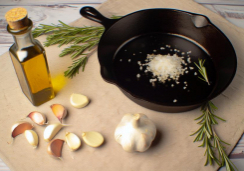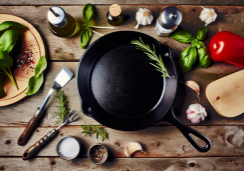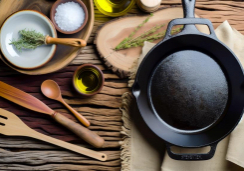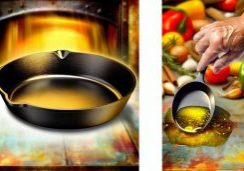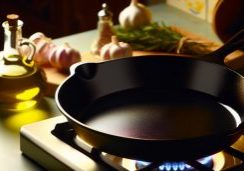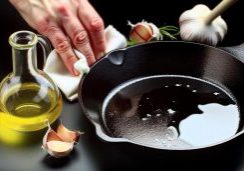Perfect Your Sous Vide Steak With These Tips
Did you know that over 60% of steak enthusiasts now prefer the precision cooking method of sous vide for that flawless edge-to-edge doneness?
You've likely invested in this culinary technique to elevate your home-cooked meals, understanding that the sous vide method offers unparalleled control over your steak's texture and flavor.
However, the difference between a good steak and a great one lies in the nuances of the process. From selecting the right cut to mastering the finishing sear, each step you take can dramatically impact the final outcome.
As you aim to perfect your sous vide steak, you'll want to pay close attention to the crucial tips that can transform your dining experience. Stay with me as I guide you through fine-tuning these details for a steak that promises to impress even the most discerning palates.
Selecting Your Steak
When choosing your steak for sous vide cooking, it's essential to select a cut that not only aligns with your taste preferences but also suits the unique advantages of this precise cooking method. To elevate your culinary experience, the best steaks for this technique are tenderloin, New York strip, ribeye, porterhouse, hanger, flap, or skirt steak. These cuts embrace sous vide's gentle cooking, transforming into succulent masterpieces.
Your steak's quality is paramount. Look for rich marbling, which promises a melt-in-your-mouth texture, and ensure it's fresh. The cut of steak should be thick, at least 1.5 inches, to benefit fully from sous vide's even temperatures and to achieve that perfect edge-to-edge doneness. Two inches is even better, especially for a luxurious Filet Mignon.
Cooking steak sous vide requires you to think ahead. Different cuts thrive at various temperatures and timings. So, knowing your cut's ideal conditions will guarantee a mouthwatering result. Before sealing your steak in its sous vide bag, season generously with salt and pepper. Don't shy away from adding aromatic herbs or a pat of butter to infuse your steak with complex flavors.
Selecting your steak with care is the first step to a sublime sous vide feast.
Seasoning and Aromatics
Having selected your ideal steak for sous vide cooking, it's time to elevate its flavor profile with the right balance of seasoning and aromatics. Begin by patting your steak dry to ensure the seasonings adhere properly. Season the steak generously with salt and pepper. Sea salt can offer a more nuanced flavor, but any salt you prefer will do the trick.
Next, consider these aromatic additions:
- Fresh Herbs: Thyme, rosemary, and garlic are classic options that infuse your steak with aromatic complexity.
- Spice Blends: Experiment with different combinations like a touch of smoked paprika or cumin for an unexpected twist.
- Citrus Zest: A bit of lemon or orange zest can brighten the rich flavors of your steak.
Vacuum-seal the seasoned steak along with your chosen aromatics to lock in the flavor. As your steak cooks to the desired temperature, these seasonings and aromatics will meld together, creating a depth of flavor that's simply irresistible.
Once done, let your steak rest briefly, allowing the juices to redistribute and the aromatics to settle in, ensuring every bite is as delicious as the last.
Vacuum Sealing Techniques
To ensure your steak cooks perfectly and retains its succulent flavors, mastering the art of vacuum sealing is a must. Using a vacuum sealer, you'll want to carefully seal the bag, making sure to remove all the air. This tight seal is crucial for even cooking and preserving those natural juices that make your steak so tender and flavorful.
When you vacuum seal your steak, remember not to overcrowd the sous vide bags. This extra space ensures that water can circulate freely, which is vital for consistent cooking. If you're using Ziploc bags and don't have a vacuum sealer, don't worry! The displacement method is a handy trick. Just submerge the sealed bag slowly in water, allowing the pressure to force the air out before sealing the top.
Properly sealed, your steak is now ready for its sous vide bath. The beauty of vacuum sealing is that it also allows for marinating within the sealed bags, infusing your steak with even more mouthwatering flavors. And because it's vacuum sealed, the marinade works its magic even more effectively.
Sous Vide Cooking Process
Now that your steak is vacuum sealed, let's immerse it in the water bath to begin the sous vide cooking process, where precision temperature control will ensure your meal is cooked to succulent perfection.
The beauty of sous vide cooking lies in its simplicity and effectiveness. By using a temperature controlled water bath, you're able to cook steak sous vide with unparalleled accuracy.
Here's what you need to know:
- Precision Cooking: Dial in the exact temperature for your desired doneness. For a perfectly cooked medium rare steak, set your water bath to a steady 129°F (54°C).
- Cooking Time and Temperature: Thicker cuts may need more time, but generally, 1 to 2 hours should suffice for most steaks. Remember, sous vide is forgiving; it's hard to overcook.
- Searing the Meat: After your steak reaches its perfect internal temperature, it's time to sear. Heat a cast iron skillet until it's smoking hot. Sear the steak quickly on each side to develop a delectable, caramelized crust.
The result? A steak that's perfectly cooked from edge to edge, with juices sealed in and ready to burst with flavor at the first cut. Finish by resting the meat briefly before serving, and you'll have a mouthwatering masterpiece that rivals the finest steakhouses.
What are Some Tips for Cooking Sous Vide Steak?
Sous vide steak cooking requires essential sous vide steak cooking techniques to achieve perfection. Start by seasoning the steak, then vacuum-seal it before placing it in a water bath at the desired temperature. After cooking, sear the steak in a hot pan for a delicious crust. Enjoy a restaurant-quality steak at home.
Finishing With the Perfect Sear
Once your steak is sous vide to tender perfection, it's time to achieve that irresistible, golden-brown sear that elevates its flavor and texture. Heat a cast iron pan on high until it's smoking hot. You'll want to sear the steaks for just 30 to 60 seconds per side. This quick, intense heat will give you a nice crust without cooking the steak further.
Before you begin, pat your medium-rare steak dry with paper towels. Moisture is the enemy of a well-browned crust. Then, add a touch of butter or olive oil to the pan. If you're feeling fancy, throw in a sprig of thyme and rosemary for an aromatic char.
Place your steak in the pan and don't move it; let the heat work its magic. After those few seconds per side, you'll witness a beautifully browned crust forming. Once you've flipped the steak and seared the other side, remove it from the pan and let it rest. This pause allows the juices to redistribute, ensuring every bite is as succulent as the first.
There you have it – a sous vide steak finished with a perfect sear, ready to make your taste buds dance with joy.
Conclusion
Now you've mastered the art of sous vide steak. Selecting a prime cut and seasoning it well sets the stage for greatness. Your vacuum sealing technique locks in those flavors, while precise temperature control ensures perfect tenderness.
That final sear? It's the crowning glory, creating a delectable crust that beckons your taste buds. Slice into your masterpiece and savor each juicy, succulent bite.
Congratulations, you're now a sous vide sensation!

